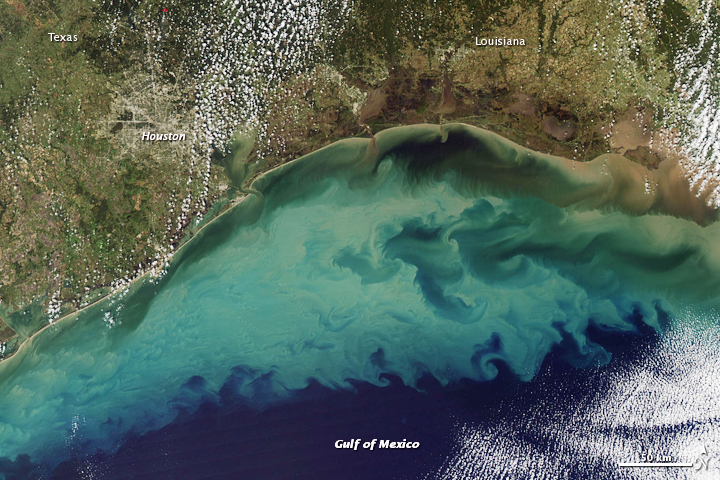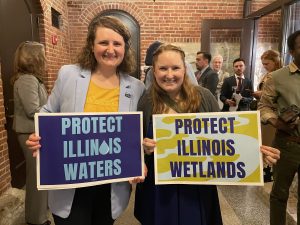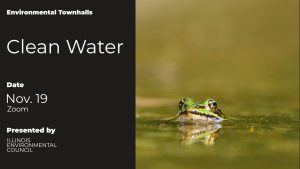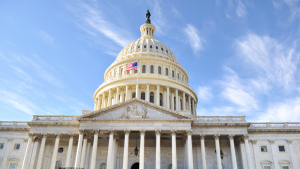Nutrient Pollution
Reducing nutrient pollution is vitally important
for protecting human health, river ecosystems and the Gulf of Mexico

GREAT LAKES
The Great Lakes is the largest freshwater ecosystem on Earth

infrastructure
Illinois's water resources face many infrastructure challenges

nutrient pollution
Nitrogen & phosphorus pollution degrade our water

drinking water
Lead in drinking water threatens many IL communities
Nutrient Pollution and Algal Blooms
The effects of algae overgrowth are felt throughout Illinois. Results from 13 Illinois water bodies sampled in 2012 indicate that cyanobacteria and associated cyanotoxins are a concern for Illinois residents — 10 of the 13 water bodies indicated a high probability of acute health effects during recreational exposure from cyanobacteria, and one had a very high probability.

Current Nutrient Pollution Laws
The primary federal law governing water pollution, with the objective of restoring and maintaining the chemical, physical, and biological integrity of the nation’s waters by preventing pollution, providing for the improvement of wastewater treatment, and maintaining the integrity of wetlands. Under the CWA, states have the “primary responsibilities and rights” to achieve the Act’s objectives, overseen by the U.S. EPA. Absent adequate state administration, the EPA establishes criteria for water quality, determines discharge levels, issues and enforces permits, and will take over if it determines that the state is underperforming.
Issued in 1998, the Plan directed EPA to develop acceptable levels of nitrogen and phosphorus for all water body types and ecoregions in the country. Individual states were originally required to adopt water quality standards for these nutrients, but Illinois has not even developed a work plan for nutrient criteria for streams where nitrogen and phosphorous start their journeys.
The Livestock Management Facilities Act
Adopted in 1996, this Illinois law establishes requirements for the siting, design, and construction of livestock management and livestock waste-handling facilities. This Act is administered by the Department of Agriculture. Under the Act, any newly-proposed livestock management facility, and certain expanding livestock management facilities, must receive a permit from the Department of Agriculture to build or expand. However, the Act has been criticized for not having a meaningful public participation process for the siting of new and expanding facilities.
A livestock management facility permit from the Department of Agriculture is, in essence, a construction permit. After a facility is built, the IEPA becomes the regulatory agency responsible for ensuring it is operated responsibly. Because the IEPA does not require NPDES permits for most CAFOs or other operating permits for CAFOs, the management and disposal of animal waste from CAFOs is largely unregulated in Illinois even though livestock animals produce exponentially more waste than humans. The U.S. EPA blames CAFOs for 20% of all pollution in rivers, lakes, and streams.
Regulation of Concentrated Animal Feeding Operations
After a two-year investigation in response to a citizen petition filed by the Illinois Citizens for Clean Air & Water (ICCAW), the U.S. EPA determined that Illinois was failing to protect waterways from CAFO pollutants. As a result, the Illinois Pollution Control Board (IPCB) promulgated new rules for CAFOs in Illinois, effective in 2014. However, NPDES permits are still not required for any CAFO that doesn’t claim to discharge or isn’t designed to discharge pollutants. For example, a facility that uses lagoons that aren’t designed to flow into waterways may be exempt from NPDES permitting.
While the new IPCB CAFO rules for waste handling and management are much more stringent than the rules that were in place previously, the new regulations only apply to permitted CAFOs. Therefore, since a vast majority of CAFOs in Illinois claim to be “zero discharge” facilities that do not have permits, the improved regulations only apply to a very small percentage of CAFO operations.
Buffer Rule for Livestock
In Illinois, livestock waste may not be applied within 100 feet of down-gradient open subsurface drainage intakes, agricultural drainage wells, sinkholes, waterways or other conduits to surface waters, without an existing 35 foot vegetative buffer between the application area and waterways or conduits to surface water. A vegetative buffer is a strip of land covered with perennial vegetation, meant to intercept nutrients and other water pollutants before they reach water.
Passed in 2010, prohibits the use of phosphorus in dish detergents.
The 2015 strategy was developed in response to the U.S. EPA 2008 Gulf Hypoxia Action Plan, which calls for each of the 12 states in the Mississippi River Basin to produce a plan to reduce the amount of phosphorus and nitrogen carried in rivers throughout the states and to the Gulf of Mexico. It calls for Illinois to voluntarily reduce its output of nitrogen and phosphorus each by 45%.
NREC was established in 2012 to support science-based research and outreach programs designed to measure the impact of environmental and management factors affecting nutrient reactions in the soil and utilization of nutrients by plants. The results from these programs provide farmers with information to design production systems for their conditions that minimize environmental impact, optimize harvest yield, and maximize nutrient utilization.
Clean Water Updates
In Wake of New Federal Rollbacks of Clean Water Protections, IEC Calls on Governor Pritzker to Respond
Illinois — On Monday, the Trump Administration’s Environmental Protection Agency (EPA) and Army Corps of Engineers announced the Polluted Water Rule, which further restricts which...
Read More >>2025 Clean Water Townhall
Is Illinois on the right track? Help shape IEC's Clean Water policy priorities as we head into 2026.
Read More >>Keep Your Eyes Open for Invasive Species This Halloween
Ghosts, Ghouls.....and Invasive Species? Learn about some of the spookiest invasive species in Illinois.
Read More >>A Guide to Water Policy Terminology
From safe drinking water in Chicago to clean rivers downstate, Illinois water policy shapes our daily lives. Understanding the language behind it helps every community...
Read More >>Analysis: Understand the Federal Government Shutdown and Its Impact on Illinois
Congress failed to meet its October 1 deadline to pass a funding bill, triggering a government shutdown that has suspended key environmental programs, furloughed government...
Read More >>2025 Environmental Scorecard
IEC's state legislative team has published our 2025 Environmental Scorecard evaluating the performance of every Illinois state legislator based on their environmental voting record.
Read More >>





